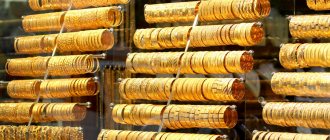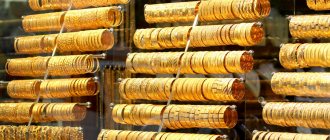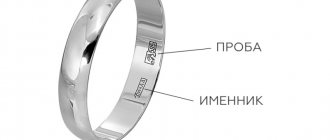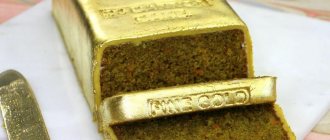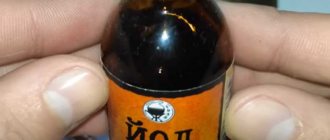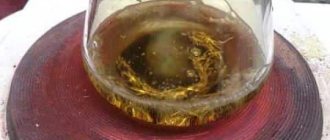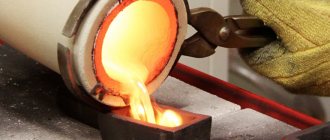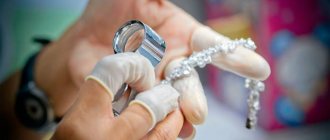Distinguishing gold from fake gold at home is not as difficult as it might seem at first. Everyone knows the “tooth test” method, but in reality it is of little use - after all, only pure gold is soft. And jewelry or products made of pure metal are almost impossible to find. Whether to check gold or not is a personal matter for everyone, but we still advise you to take a closer look at the jewelry to avoid unpleasant moments. A few simple methods that we will talk about today are worth adopting - because you never know where new knowledge will come in handy.
Look at the sample
Factory products always have a standard stamp with a hallmark. Fineness is the number of grams of pure metal in the alloy; the lower it is, the worse the quality.
According to Decree of the Government of the Russian Federation dated May 6, 2016 No. 394, all alloys in which more than 30% of the weight is precious metal must be stamped with hallmark. Standard samples for gold are 375 (lowest), 500, 583, 585, 750, 916, 958, 999 (highest - only 1 g of impurities per 1 kg of metal).
In the USA and Canada, carat hallmarks are used (9 carats correspond to the 375th hallmark, 24 carats correspond to the 999th). Moreover, the letter K next to the numbers means that the product itself is gold, and KGP means that it is plated with gold (karat gold plated).
In Belgium, gold samples are designated by numbers: 1 – 833, 2 – 750, 3 – 585. A similar system works in the Czech Republic and Slovakia: 0 – 999, 1 – 986, 2 – 900, 3 – 750, 4 – 585.
Examining a sample is often difficult. Use your smartphone in macro mode, then enlarge the photo and look at the sample in detail. The mark should not be crooked or blurry. This is, if you like, a passport of the product, so they are very careful when applying it.
Characteristics of precious metal
Gold is a metal that is resistant to external factors, durable and beautiful, but at the same time very soft. That is why there is no jewelry made from pure precious metal; other chemical elements are necessarily added to the alloy:
- yellow gold - a combination of equal parts of silver, copper and gold itself;
- red gold - 25% copper;
- white gold - contains 32% gold, the rest is an alloy of platinum and nickel.
Pure gold is marked with a purity of 999. The 958 purity contains 96.3% pure gold. Such materials are rarely used for making jewelry - they are very soft.
Attach a magnet
Plating steel or other alloys with a high iron content with gold or its imitation is a common practice. Only ferromagnets are strongly magnetic - iron, cobalt, nickel, gadolinium, terbium, dysprosium, holmium, erbium, thulium.
Dimagnets (for example, water or table salt) and paramagnets (aluminum, etc.) are weakly magnetic. All non-ferrous metal is not magnetic.
If it happens on the beach or in places where tourists gather, buy the cheapest magnet in a souvenir shop and attach it to the product. If it sticks, it’s definitely a fake or the metal is of too low standard (too many iron impurities). If not, perform other checks.
Test with vinegar
Tell the seller that you will test the gold with vinegar. Are you nervous? There’s no need to run to the grocery store anymore. But a professional who is confident in his product will not sweat it.
Fake gold quickly darkens in vinegar - just pour a little into a glass and hold the metal in it for about five minutes. But real high-grade metal doesn’t care about anything.
Drop some iodine
Rub the product on jeans or other thick fabric, then drop iodine on this place on the metal. High standard gold does not darken. If the metal has darkened (this may appear within a minute), the product is not genuine or the standard is not too high.
But brass and copper do not change color from iodine either. So this testing method is good for high-grade gold, but it is not enough on its own.
We do not recommend testing products with iodine levels of 585 or lower. After iodine, you will definitely have to polish them or remove stains with ammonia; traces may remain.
How to visually distinguish gold when purchasing in a store?
Before removing your bank card from your wallet, please note the following:
- Each product made in Russia must be marked with a hallmark of 375 or 585 together with the logo of the Federal Assay Office - a woman’s profile in a kokoshnik. The print should be clear, without blurred edges. To view, use a magnifying glass - there is nothing “criminal” about consumer meticulousness.
- If the decoration is composite with a complex openwork shape, then you will see solder at the joints of the elements. Upon closer inspection, there is a slight difference in shades - this is due to the use of a purer composition, this is a good sign.
- Hold the product in your hands for a few minutes to warm it up, and then smell it. Real gold does not emit any odors, unlike copper alloy jewelry.
After examining the item itself, we proceed to inspect the accompanying documents - tags and catalog cards, where key information about the product is always indicated:
- Article, full trade name, type: T108023275 Earrings with pearls;
- Legal name of the manufacturer, head address, city of Yaroslavl, Sobinova street, building 47a
; - Mark of the technical control department: quality control department stamp and examination number;
- Technical information about the product - sample, weight, type of insert;
- Date of manufacture;
- Barcode;
- QR code with an encrypted link to the product position in the electronic catalog.
Only after making sure that all formal requirements are met should you make a purchase in a retail store and then begin a home inspection.
Draw with lapis pencil
A lapis pencil is needed to stop the bleeding. This is an antiseptic based on silver nitrate, it can be bought at a pharmacy, it costs about 100-150 rubles.
To check the authenticity of gold, soak the item in water. Then, using a lapis pencil, draw a small line over the wet one and wipe it off.
Lapis does not react with gold, but does react with other metals. If a trace remains, then the gold is fake or of very low standard. Nothing will happen to genuine metal.
How do they check gold in pawn shops?
Specialists in the purchase of precious metals use their own methods of precise examination:
- Touchstone and nitric acid - first, a control trace is made on a silicon block from a previously tested product. A line is drawn next to it with a second decoration, after which one or several drops of an acid composition are applied to both stripes. If the shade is the same, there are no questions about authenticity.
- Hydrostatic method - it is based on calculating the specific gravity of a thing in air and distilled water. The first step is a control weighing on a jewelry scale, and then in a glass filled with liquid. The method is absolutely safe for any products except antique decorative watches.
Reputable institutions use a device called a spectrometer. In fact, this will already be a professional examination. Gold jewelry is placed in a chamber where, under the influence of radioactive waves, its spectrum is recorded, reflecting the percentage of a particular metal. The procedure is not cheap, but it is as fast and accurate as possible.
Test with black bread
The method is safe (for real gold!), but slow. Take the crumb of black bread, remember, mix with water and stick the mixture onto the product. Leave it until the bread crumb turns into a dry crust, then break it apart.
If there are dark traces inside the crumb, it means the fake has oxidized. If not, then it is either gold or good gilding.
Don't try it on your teeth!
Gold is a soft metal, so if you squeeze it hard with your teeth, marks will appear. Agree, the seller will not like it and will force you to buy.
Athletes test their medals for the sake of photos. Moreover, gold medals are actually just gold plated.
By the way, fake aluminum behaves exactly the same way, so if the seller insists on a “teeth test”, don’t be fooled.
On the other hand, only a new product does not have even small scratches on the surface. If a person claims to be selling his used gold, but it appears to have only come from a factory, something is wrong here.
conclusions
If you buy gold secondhand or from an unverified store, use as many methods as possible to ensure the authenticity of the product. The main thing is not to try too hard, so as not to spoil the soft metal.
(
66 votes, overall rating: 4.38 out of 5)
